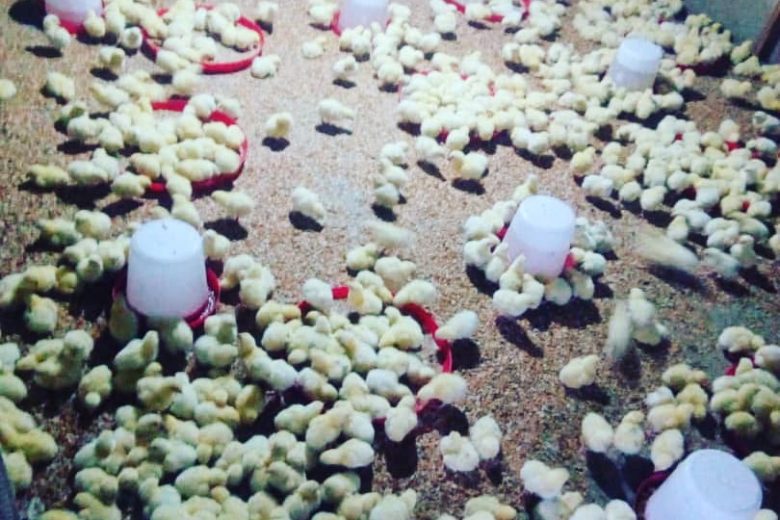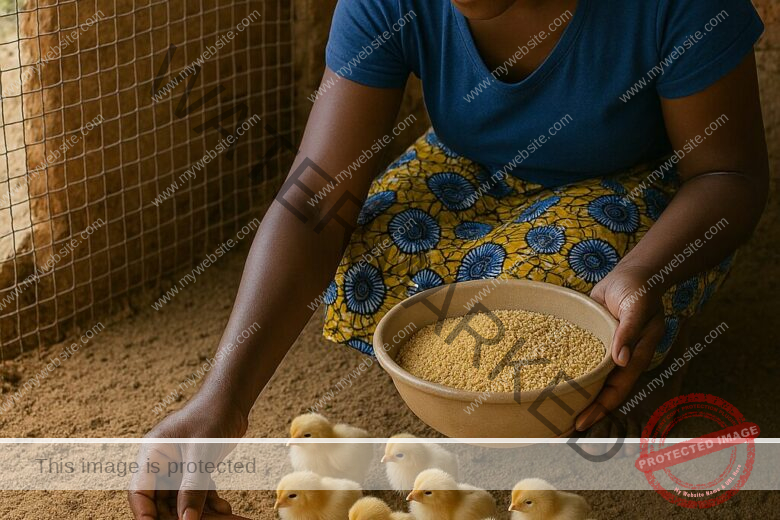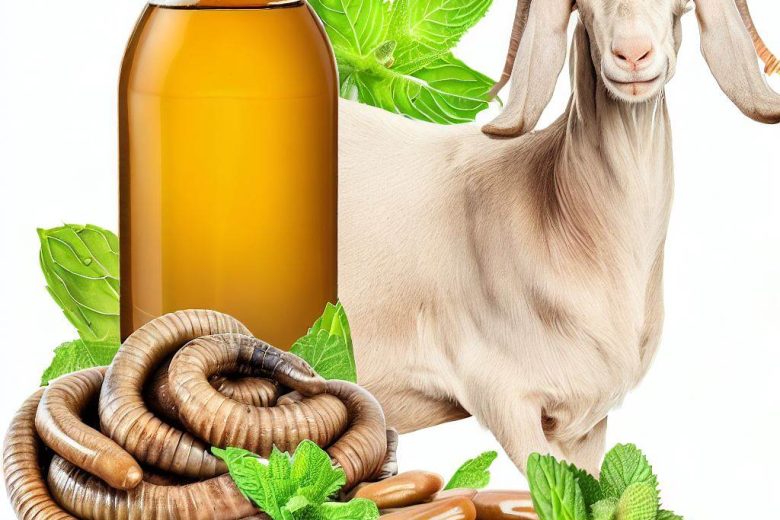Starting a poultry farming business in Nigeria can be a rewarding venture, both financially and professionally. With a growing demand for poultry products in the country, there is a significant opportunity for entrepreneurs to establish successful poultry farms.
To start a successful poultry farming business in Nigeria, it is crucial to conduct thorough market research to understand the demand and preferences of the target market. Implement effective biosecurity measures and prioritize the health and nutrition of the flock. Develop strong marketing strategies and build partnerships to reach potential buyers and maximize profitability.
This comprehensive guide will walk you through the essential steps and considerations to start a poultry farming business in Nigeria, from understanding the industry to scaling and expanding your operations.
How To Start Poultry Farming In Nigeria
Poultry farming is the practice of raising domesticated birds such as chickens, turkeys, ducks, and geese for their meat, eggs, or feathers. It is an important sector in Nigeria’s agricultural industry, providing a significant source of employment and contributing to the country’s food security.
However, starting a poultry farming business requires careful planning, knowledge of the industry, and an understanding of best practices.
Read Also: How To Start Bee Farming In Nigeria [Beginners Guide]
Preparing to Start a Poultry Farming Business
Step 1: Identifying Your Niche and Target Market
Before starting a poultry farming business, it is essential to identify your niche and target market. Determine whether you want to focus on broiler production, egg production, or both. Assess the demand and competition in your chosen niche to identify potential opportunities.
Step 2: Conducting Market Research
Conducting thorough market research is crucial for understanding customer preferences, demand, and pricing in the poultry industry. Identify potential buyers, such as local markets, supermarkets, restaurants, and wholesalers. Gather insights on the prevailing market prices, product quality expectations, and consumer trends.
Read Also: 10 Profitable Animal Farming Business To Start In Nigeria
Step 3: Developing a Business Plan
A well-crafted business plan serves as a roadmap for your poultry farming business. It outlines your goals, strategies, financial projections, and operational details. Include sections on market analysis, organizational structure, production and marketing strategies, and financial forecasts.
Step 4: Acquiring Necessary Skills and Knowledge
To succeed in poultry farming, it is vital to acquire the necessary skills and knowledge. Attend training programs, workshops, or courses on poultry production, management, and health. Networking with experienced farmers and industry experts can also provide valuable insights.
Setting Up Your Poultry Farm
Step 5: Selecting a Suitable Location
Choose a location for your poultry farm that is easily accessible, has adequate water supply, and is free from potential environmental hazards. Consider proximity to markets and transportation routes. Ensure compliance with local zoning regulations and land-use restrictions.
Read Also: Top 10 Biggest Fish Farm Projects in Nigeria
Step 6: Constructing Poultry Houses and Facilities
Design and construct suitable poultry houses and facilities based on the type of production system you choose. Factors to consider include ventilation, lighting, temperature control, and adequate space for the birds. Ensure proper waste management systems and biosecurity measures are in place.
Step 7: Procuring Necessary Equipment and Supplies
Procure the essential equipment and supplies required for poultry farming. This includes feeders, drinkers, brooders, egg incubators, and cleaning equipment. Ensure that the equipment is of good quality and appropriate for your production scale.
Read Also: How To Formulate Pig Feed In Nigeria
Step 8: Ensuring Biosecurity Measures
Biosecurity is critical to prevent the introduction and spread of diseases in your poultry farm. Implement strict biosecurity measures such as controlling visitor access, sanitizing equipment, and establishing quarantine protocols for new birds.
Understanding the Poultry Farming Industry in Nigeria
The poultry farming industry in Nigeria is diverse and encompasses various types of poultry production, including broiler farming, layer farming, and hatchery operations. Broilers are raised for meat production, while layers are specifically bred for egg production. Hatcheries play a crucial role in providing day-old chicks to farmers.
Read Also: Salmonellosis Disease In Poultry Farm And How To Treat With Herbs
Potential Market and Profitability
The demand for poultry products in Nigeria is substantial and continues to grow due to population growth, changing dietary preferences, and urbanization. Nigeria’s large population presents a significant market for poultry farmers, both for domestic consumption and export opportunities. When properly managed, poultry farming can be a profitable business venture.
Key Challenges and Considerations
While poultry farming offers promising prospects, there are several challenges that aspiring poultry farmers need to be aware of. Some of the key considerations include:
Read Also: Vaccines Schedule for Poultry Farm [All You Need To Know]
Disease outbreaks and biosecurity:
Poultry farms are susceptible to diseases, and maintaining proper biosecurity measures is crucial to prevent the spread of infections.
Feed costs and availability:
The cost and availability of poultry feed can impact profitability. Developing strategies to ensure a steady supply of affordable and nutritious feed is essential.
Market volatility and competition:
The poultry industry can be affected by market fluctuations and competition. Staying updated with market trends and developing unique selling points can help overcome these challenges.
Key Factors To Choosing the Right Poultry Breeds To Start Your Farm
Evaluating Different Breeds and Their Characteristics
Choose poultry breeds that are well-suited to your production goals, market demand, and local conditions. Consider factors such as growth rate, feed efficiency, disease resistance, and egg-laying capacity. Consult with breeders or experts for guidance.
Read Also: 20 Common Diseases In Poultry Farm
Considering the Demand and Market Preference
Understand the preferences and demands of your target market. Determine whether they prefer specific breeds or traits, such as fast-growing broilers or high-yielding layers. Align your breed selection with market demand to maximize profitability.
Selecting Breeds Suitable for Local Conditions
Consider the climatic conditions and environmental factors in your location when selecting poultry breeds. Some breeds are better adapted to hot or cold climates, while others may be more resistant to local diseases. Choose breeds that can thrive in the local environment to ensure better productivity and health.
Read Also: 12 Poultry Farming Tips For Beginners [Success Guide]
Managing Poultry Health and Nutrition
Implementing Vaccination and Disease Prevention Protocols
Maintaining good poultry health is essential for the success of your farm. Develop a vaccination schedule in consultation with a veterinarian to protect your birds against common diseases. Implement strict biosecurity measures, such as regular disinfection and proper waste management, to minimize disease risks.
Providing Balanced Nutrition and Feed Management
Proper nutrition is crucial for optimal growth and productivity of poultry. Develop a well-balanced feed formulation that meets the nutritional requirements of your birds. Monitor feed quality, storage conditions, and feeding schedules to ensure consistent and appropriate nutrition.
Monitoring and Maintaining Flock Health
Regularly monitor the health of your flock through visual inspections, weight checks, and behavior observation. Identify and address any signs of illness or distress promptly. Establish a relationship with a veterinarian who can provide guidance and support for flock health management.
Poultry Farming Operations and Management
Day-to-Day Care and Feeding Routines
Establish daily routines for caring for your poultry, including feeding, watering, and egg collection. Monitor the flock’s behavior, appetite, and overall condition to detect any health issues early. Provide clean water, comfortable bedding, and suitable environmental conditions to ensure the well-being of your birds.
Egg Production and Management
If you are focusing on egg production, implement effective egg management practices. Collect eggs frequently to prevent breakage and contamination. Grade and store the eggs properly to maintain quality and freshness. Establish processes for cleaning, packaging, and distribution.
Broiler Production and Management
If you are raising broilers, develop a production plan that includes selecting quality chicks, managing brooder temperature and lighting, and implementing a feeding and growth strategy. Monitor the growth rate, adjust feed rations accordingly, and ensure proper ventilation in broiler houses.
Proper Waste Management and Disposal
Implement effective waste management systems to maintain cleanliness and prevent environmental pollution. Properly dispose of manure, used litter, and other waste products. Explore options for utilizing waste as organic fertilizer or energy sources.
Marketing and Selling Poultry Products
Identifying Potential Buyers and Markets
Identify potential buyers and markets for your poultry products. This can include local markets, supermarkets, hotels, restaurants, and direct sales to consumers. Build relationships with buyers and understand their product preferences and requirements.
Developing Marketing Strategies
Develop effective marketing strategies to promote your poultry products. Utilize both online and offline channels, such as social media, websites, local advertisements, and product demonstrations. Differentiate your products by highlighting quality, health benefits, or unique selling points.
Building Partnerships and Distribution Channels
Explore partnerships with other poultry farmers, suppliers, or distributors to expand your market reach. Collaborate with restaurants, hotels, or catering services to supply poultry products on a regular basis. Consider participating in trade fairs or agricultural exhibitions to showcase your products.
Financial Planning and Record-Keeping
Estimating Startup and Operational Costs
Develop a comprehensive financial plan that includes the initial capital required to start your poultry farming business. Consider costs such as land, construction, equipment, feed, chicks, veterinary services, and marketing. Ensure that you have sufficient funds to cover both startup and operational expenses.
Tracking Expenses and Income
Maintain accurate and detailed records of your expenses and income. Implement a robust record-keeping system to track feed costs, veterinary expenses, labor costs, sales revenue, and other financial transactions. Regularly review your financial statements to assess the profitability of your business.
Evaluating Profitability and Making Informed Decisions
Regularly analyze your financial data to evaluate the profitability of your poultry farming business. Assess factors such as feed conversion ratio, production costs, market prices, and sales volume. Use this information to make informed decisions, identify areas for improvement, and adjust your strategies accordingly.
Regulations and Compliance
Understanding Legal Requirements and Permits
Ensure compliance with relevant laws, regulations, and permits for poultry farming. Familiarize yourself with local agricultural and livestock regulations, as well as food safety standards. Obtain necessary permits, such as those for land use, environmental impact assessment, and animal welfare.
Complying with Animal Welfare and Food Safety Standards
Maintain high standards of animal welfare and hygiene in your poultry farm. Provide adequate space, ventilation, and access to clean water and feed. Follow recommended practices for disease prevention, vaccination, and medication administration. Implement proper food safety measures during egg collection, processing, and packaging.
Scaling and Expanding Your Poultry Farming Business
Evaluating Growth Opportunities
Assess opportunities for scaling and expanding your poultry farming business. Consider factors such as market demand, available resources, and financial viability. Evaluate options such as increasing production capacity, diversifying product offerings, or expanding into related areas such as poultry processing or value-added products.
Increasing Production Capacity
If there is sufficient demand and resources, consider increasing the scale of your poultry farm. This may involve constructing additional poultry houses, investing in more equipment, or expanding your workforce. Ensure that the growth is sustainable and manageable.
Diversifying Product Offerings
Explore opportunities to diversify your product offerings to cater to different market segments. This can include value-added products such as processed poultry meat, specialty eggs, or organic poultry products. Conduct market research and assess the feasibility and profitability of new product lines.
Can I start a poultry farming business with limited capital?
Yes, it is possible to start a poultry farming business with limited capital. Start small and gradually expand as you generate revenue. Focus on essential aspects such as quality breeds, proper housing, and effective disease prevention measures to ensure a solid foundation for your business.
How long does it take to start making a profit in poultry farming?
The time it takes to start making a profit in poultry farming varies and depends on various factors, including your production scale, market conditions, and operational efficiency. Typically, it can take several months to a year to start seeing significant returns on investment.
What are some common challenges in the poultry farming industry?
Common challenges in the poultry farming industry include disease outbreaks, feed costs, market volatility, and competition. It is important to stay updated with industry trends, invest in disease prevention measures, and develop effective marketing strategies to overcome these challenges.
How do I ensure the health and well-being of my poultry flock?
To ensure the health and well-being of your poultry flock, implement strict biosecurity measures, provide balanced nutrition, and follow recommended vaccination protocols. Regularly monitor the flock’s health, address any signs of illness promptly, and maintain a clean and comfortable living environment.
What are the future prospects for the poultry farming industry in Nigeria?
The future prospects for the poultry farming industry in Nigeria are promising. With a large population, changing dietary preferences, and increasing urbanization, the demand for poultry products is expected to continue growing. By adopting modern farming practices, leveraging technology, and focusing on quality, poultry farmers can capitalize on these opportunities.
How much does it cost to start up a poultry farm in Nigeria?
To start up a poultry farm in Nigeria, you will have at least 500,000 to 1 million nairas.
How can I start a small poultry farm?
To start poultry farming in Nigeria, you need to choose your area of interest either as an egg distributor or raising birds for others. Learn the skill to raise a bird of your choice then source for funds.
How much do poultry farmers make in Nigeria?
Nigeria’s chicken farming industry was valued at N1. 6 trillion in 2019 by the Governor of the Central Bank of Nigeria (CBN) Godwin Emefiele, making it the most commercialized sub-sector of the country’s agricultural sector.
How many bags of feed can 500 layers consume?
For the first month, 500 layer chicks will require 750 kilograms of feed if each one consumes 1.5 kilograms of feed every month. Your chicks’ food intake will increase by about 1.75 kilograms a month over the next month.
How much does it cost to raise 100 chickens?
As a rough estimate, it would cost $6900 each year to keep 100 hens, and you would receive $1500 as a prize for doing so.
How can I become a successful poultry farmer?
To become successful as a poultry farmer, you need to be knowledgeable about birds, common diseases, what to feed your birds, and how to manage your poultry very well
Can a chicken lay 3 eggs in one day?
No, it is not possible, excerpt by chance.
How long do layers lay eggs?
Hens can live up to 8 years in a backyard flock and lay eggs for 3-4 years on average. The number of eggs produced, the size of the eggs and the quality of the shells all diminish over time. Egg production declines after two to three years in most commercial layers.
How long does a baby chicken take to grow?
At 18 weeks of age, a baby chicken is regarded to be “mature.”
Breed-specific differences in how rapidly or slowly an individual chicken develops may also play a role in the timing of this stage of development.
How many eggs do layers produce per day?
By maintaining 12 hens, you can supply your family with eggs. Every day, the hens will lay between nine and ten eggs. You may even be able to establish your own small business in this manner. In order to cover the cost of the hens’ food, you can sell four of the ten eggs.
What is the most common poultry disease?
- Newcastle Disease.
- Coccidiosis
- Salmonellosis
- Avian Influenza.
- Fowl Pox.
Conclusion
Poultry business is a lucrative business anyone can pick up and start, so, if you are thinking of starting one, we have discussed what you need to know range from the types of poultry farming, and how to get started with our east listed 6 steps and all you need to know.





6 Replies to “[Beginners Guide] How To Start A Successful Poultry Farm In Nigeria”